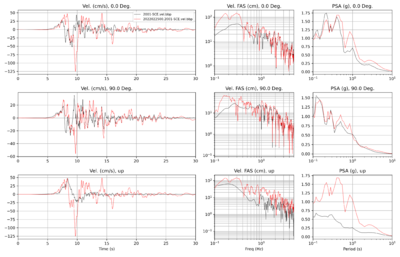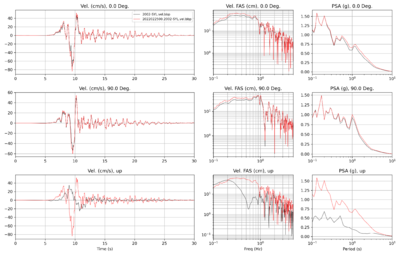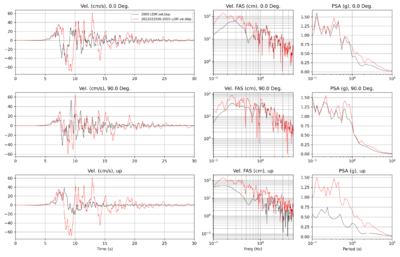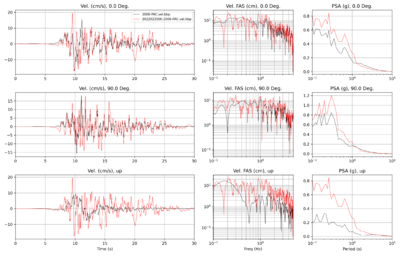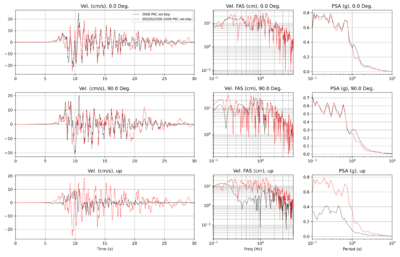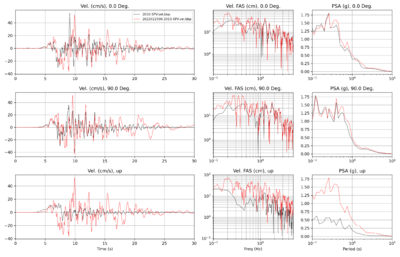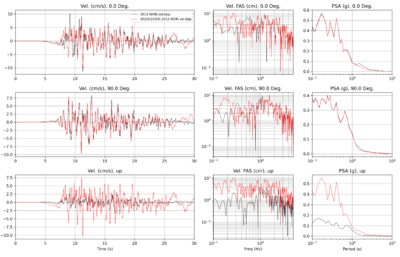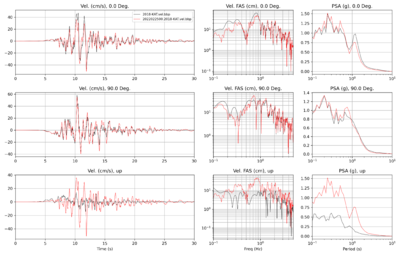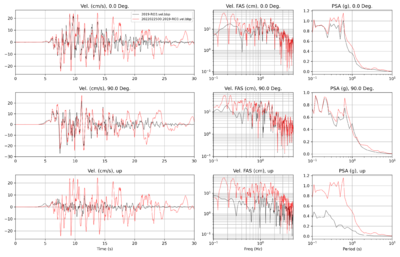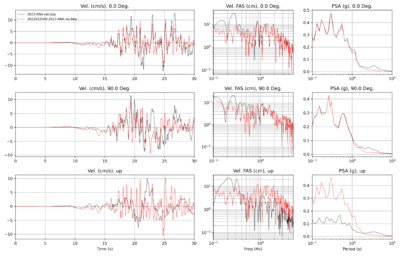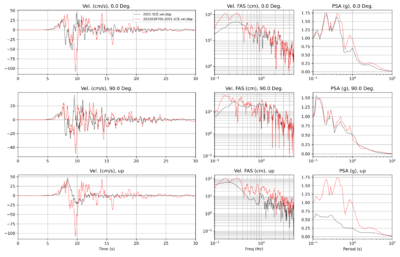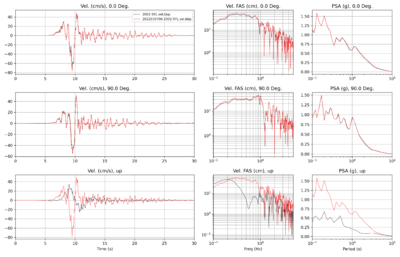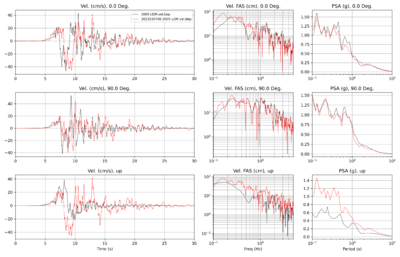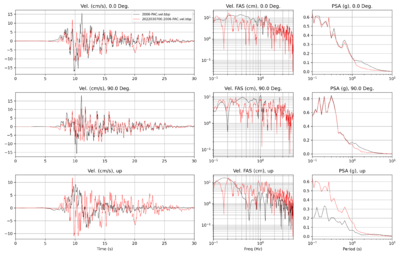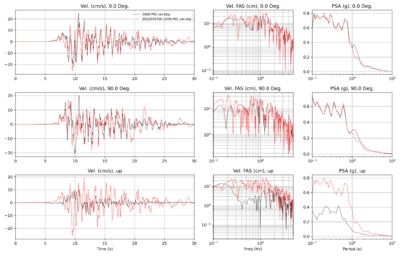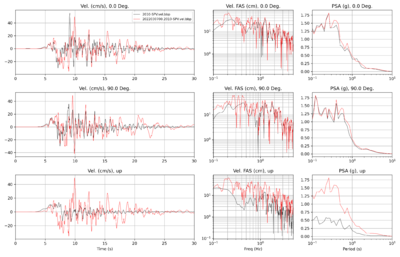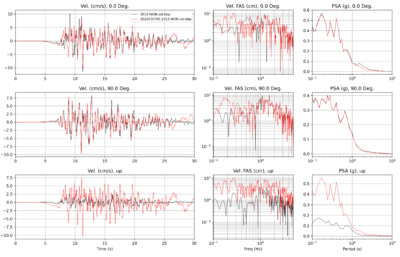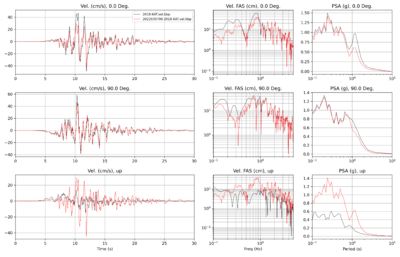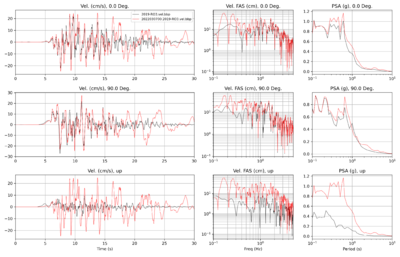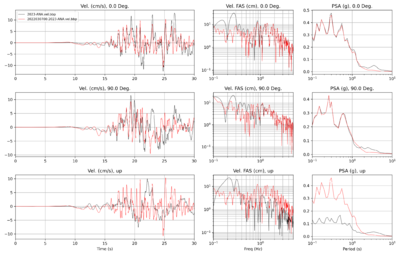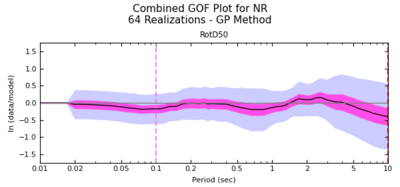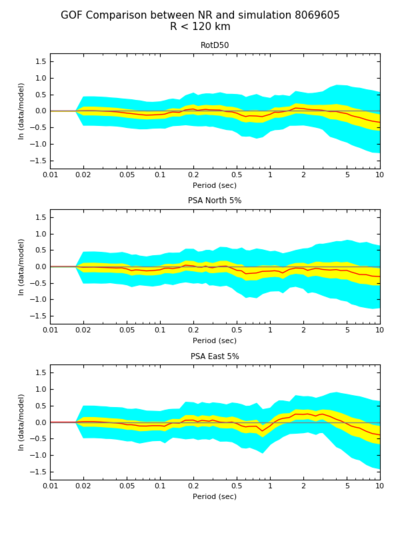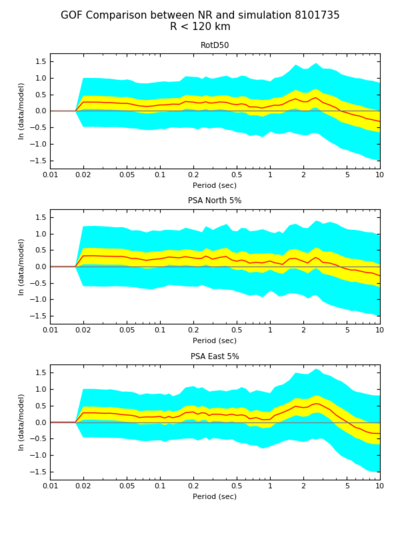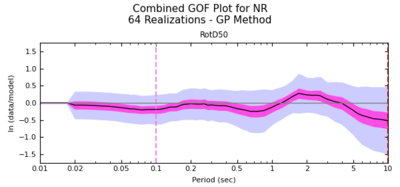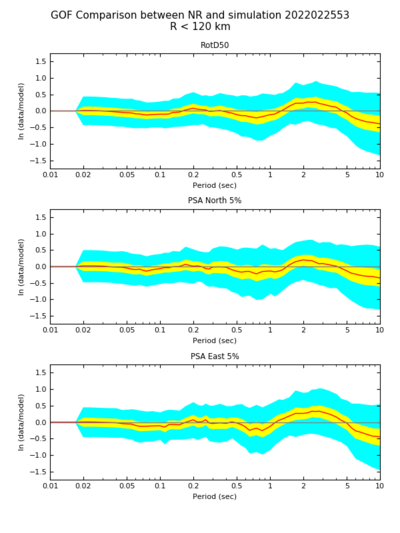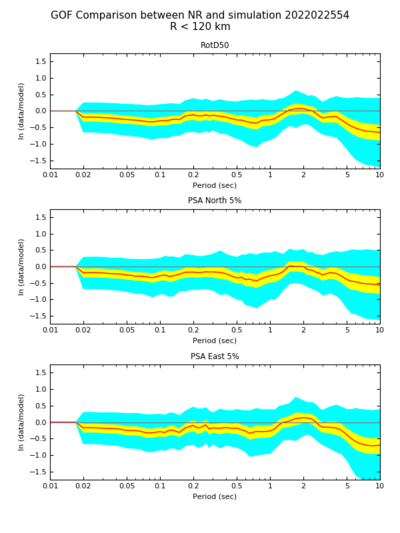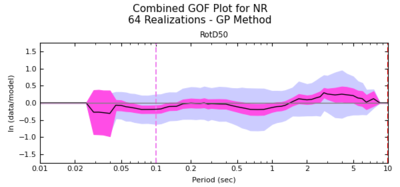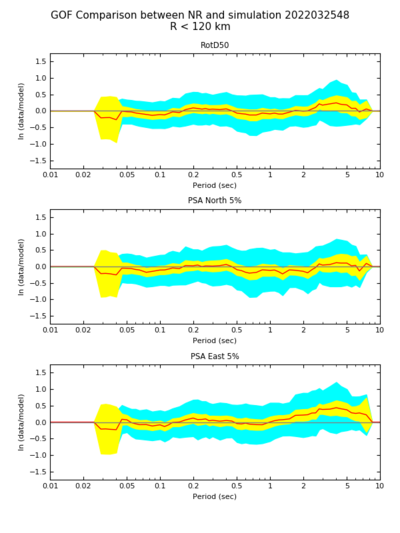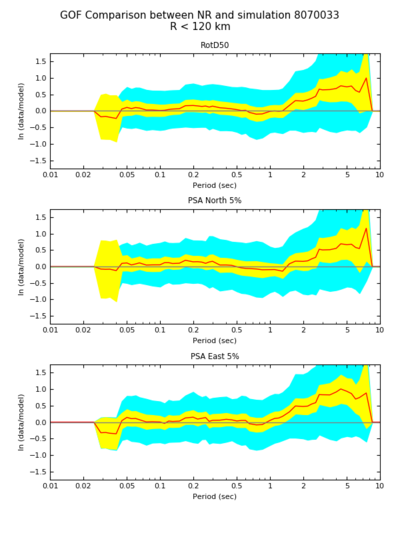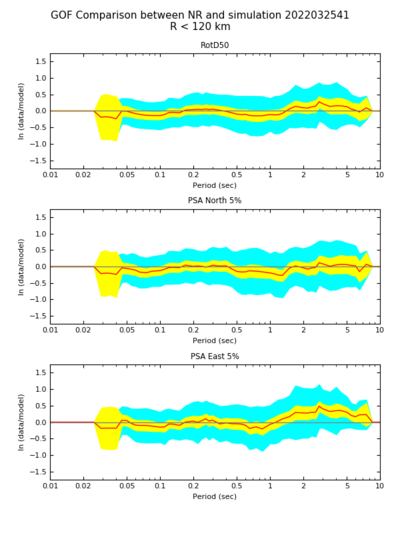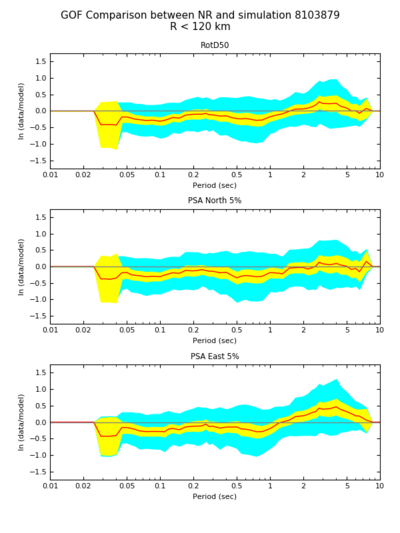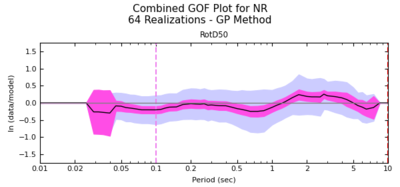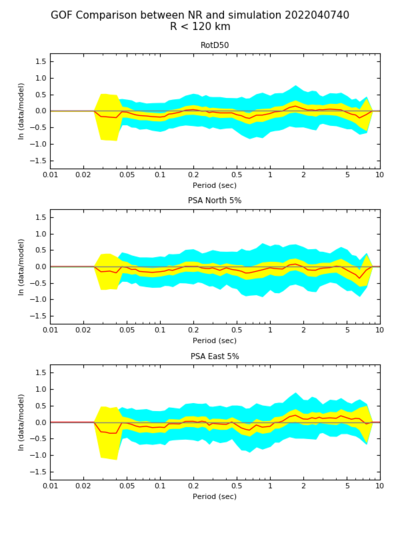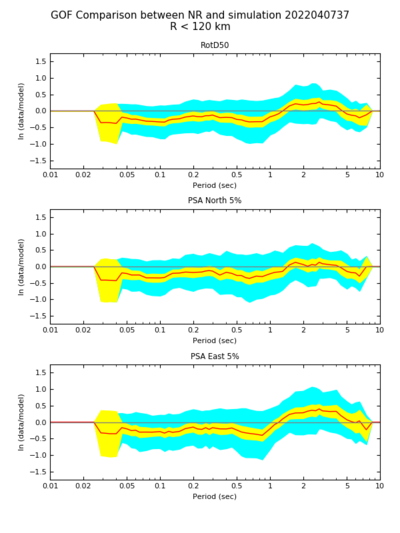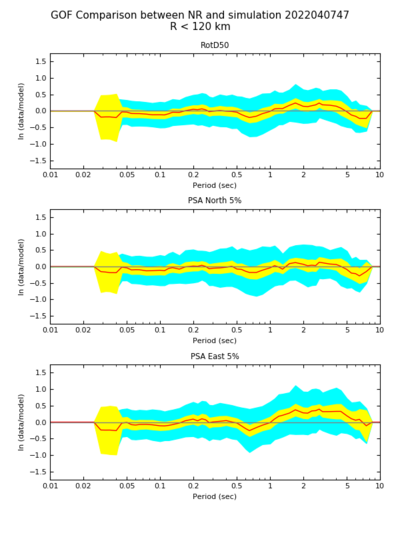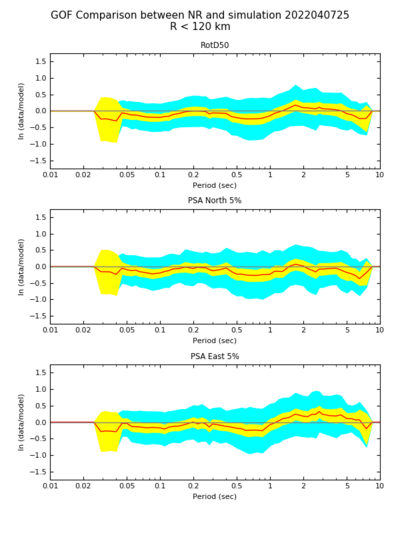Difference between revisions of "Broadband CyberShake Validation"
| Line 156: | Line 156: | ||
=== Sites === | === Sites === | ||
| − | The BBP validation event for Chino Hills has 40 stations. A KML file with the stations is available [File:chino_hills_stations.kml here]. | + | The BBP validation event for Chino Hills has 40 stations. A KML file with the stations is available [[File:chino_hills_stations.kml here]]. |
Revision as of 20:31, 27 April 2022
This page follows on CyberShake BBP Verification, moving from 1D comparisons to 3D CyberShake comparisons with both the BBP and observations.
Contents
Northridge
1D BBP comparisons
We calculated 64 realizations for Northridge for these 38 stations.
Some of the differences between the 1D BBP and 3D CyberShake results can be attributed to differences in site response, which is calculated based on the reference velocity ('vref') and the vs30 of the site. A spreadsheet with vref and Vs30 for both the BBP and CyberShake is available File:BBP v CyberShake Northridge vs30.xls
V1 (2/14/22)
Initially, we used vref=500 for both the high-frequency and low-frequency site response. However, this is incorrect; vref for the low-frequency should vary depending on the properties of the 3D velocity mesh.
V2 (2/25/22)
We continued to use vref=500 for the high-frequency site response. For the low-frequency site response, we are now using the same vref we used in Study 15.12:
vref_LF_eff = Vs30 * [ VsD5H / Vs5H ]
Vs30 = 30 / Sum (1/(Vs sampled from [0.5,29.5] in 1 meter increments))
H = grid spacing
Vs5H = travel time averaged Vs, computed from the CVM in 1 meter increments down to a depth of 5*H
VsD5H = discrete travel time averaged Vs computed from 3D velocity mesh used in the SGT calculation over the upper 5 grid points
So, for H=100m Vs5H would be:
Vs500 = 500 / ( Sum ( 1 / Vs sampled from [0.5,499.5] in 1 meter increments ))
And then VsD5H is given by:
VsD500 = 5/{ 0.5/Vs(Z=0m) + 1/Vs(Z=100m) + 1/Vs(Z=200m) + 1/Vs(Z=300m) + 1/Vs(Z=400m) + 0.5/Vs(Z=500m) }
Below are the ts_process plots for a subset of 10 stations, comparing the 3D CyberShake with 1D BBP results.
| Site | TS Process plot |
|---|---|
| SCE | |
| SYL | |
| LDM | |
| PAC | |
| PKC | |
| SPV | |
| WON | |
| KAT | |
| RO3 | |
| ANA |
V3 (3/2/22)
Next, we recalculated the CyberShake results for 10 sites, using the BBP vs30 values for both the low-frequency and high-frequency elements. Note that the vref low-frequency value for CyberShake is still being derived from the velocity model.
| Site | TS Process plot |
|---|---|
| SCE | |
| SYL | |
| LDM | |
| PAC | |
| PKC | |
| SPV | |
| WON | |
| KAT | |
| RO3 | |
| ANA |
Observational Comparisons
We calculated goodness-of-fit results for both Broadband CyberShake and the BBP against observations for Northridge, using the 64 realizations and 38 stations.
TS process plots comparing the 3 results are available here: v1 ts process plots.
Broadband Platform
| Overall GoF | GoF, best realization (#7) | GoF, worse realization (#15) |
|---|---|---|
CyberShake v4_8
| Overall GoF | GoF, best realization (#53) | GoF, worse realization (#54) |
|---|---|---|
Broadband Platform, updated frequency bands
We realized that our GoF comparisons were run using hard-coded frequency bands of [0.05, 50] Hz. This was correct when doing CS-to-BBP comparisons, but not correct when using observations. We updated the frequency bands and reran the GoF.
| Overall GoF | GoF, best BBP realization (#47) | GoF, worst BBP realization (#25) | GoF, best CS realization (#40) | GoF, worst CS realization (#37) |
|---|---|---|---|---|
CyberShake v4_8, updated frequency bands
As above, reran the GoF.
| Overall GoF | GoF, best CS realization (#40) | GoF, worst CS realization (#37) | GoF, best BBP realization (#47) | GoF, worst BBP realization (#25) |
|---|---|---|---|---|
Chino Hills
For our second event, we selected Chino Hills.
Sites
The BBP validation event for Chino Hills has 40 stations. A KML file with the stations is available File:Chino hills stations.kml here.
